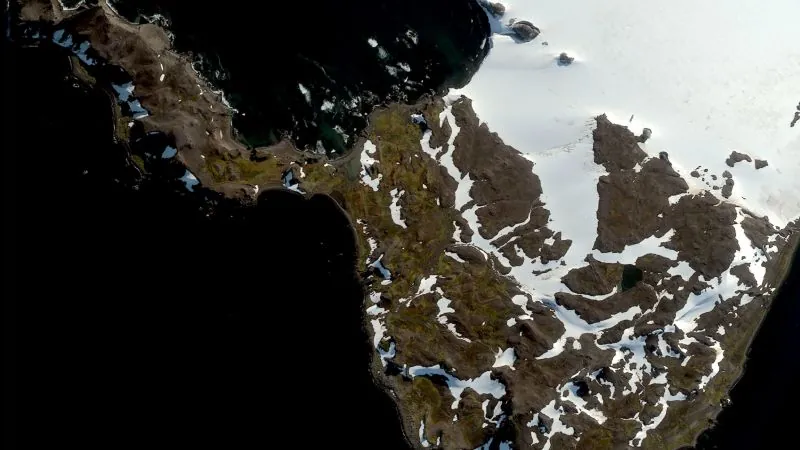
Antarctica's Alarming Transformation: Is a Green Paradise Emerging?
2024-10-04
Recent studies reveal that parts of Antarctica are turning green at an unprecedented rate, raising urgent alarms about climate change's impact on one of Earth's last wild frontiers. A collaborative research effort involving scientists from the University of Exeter, the University of Hertfordshire, and the British Antarctic Survey, published in Nature Geoscience, has utilized satellite imagery to demonstrate that plant life — predominantly mosses — has surged more than 10-fold over the past 40 years on the Antarctic Peninsula.
In 1986, less than 0.4 square miles of the Peninsula was covered in vegetation. By 2021, this area expanded to nearly 5 square miles, representing a dramatic and accelerating change. Between 2016 and 2021 alone, the greening phenomenon increased by over 30%, indicating a swift response to rising temperatures in this remote wilderness.
Thomas Roland, one of the study's authors and an environmental scientist, emphasized the extent of anthropogenic climate change. "Our findings confirm that the influence of climate change has no limit in its reach," he stated. "Even in the Antarctic Peninsula, a quintessential wilderness, landscape changes are visible from space."
Antarctica, known for being the coldest place on Earth, is currently experiencing extreme heat events. This summer, regions of the continent recorded temperatures soaring up to 50 degrees Fahrenheit above normal, with some areas seeing unprecedented spikes of 70 degrees above average in March 2022. This alarming trend poses serious questions about the long-term viability of the region's ecosystem.
As the continent continues to warm due to fossil fuel emissions, scientists predict that the greening process will not only persist but also accelerate. With this transformation, the risk of invasive species becomes more significant. Seeds and spores could easily travel to the Antarctic Peninsula through the boots of tourists, researchers, and migrating birds, heightening the threat to native wildlife.
Moreover, a darker landscape resulting from increased vegetation could diminish the Peninsula's ability to reflect solar radiation, potentially creating a feedback loop that exacerbates warming and promotes further vegetation growth. Olly Bartlett, another study author, warned, "This iconic landscape could be changed forever."
Matthew Davey, an expert in polar plant and microbe ecology, remarked that while the area of increased vegetation is relatively small, the rate of growth signals an important shift in ecological dynamics in Antarctica. Interestingly, the research focused primarily on detecting larger moss fields, meaning additional plant types such as lichens, grass, and even algae in the region might also be contributing to the burgeoning green landscape.
Looking ahead, the next phase of research will delve into how plants begin to colonize the bare land left behind as glaciers recede. This transformation in Antarctica holds significant implications for global ecosystems, climate patterns, and biodiversity.
As the world watches closely, one thing is clear: Antarctica is changing at a pace that could redefine its future. What other surprises does this frozen continent hold as it warms? Stay tuned for more revelations about this crucial but vulnerable part of our planet.



 Brasil (PT)
Brasil (PT)
 Canada (EN)
Canada (EN)
 Chile (ES)
Chile (ES)
 España (ES)
España (ES)
 France (FR)
France (FR)
 Hong Kong (EN)
Hong Kong (EN)
 Italia (IT)
Italia (IT)
 日本 (JA)
日本 (JA)
 Magyarország (HU)
Magyarország (HU)
 Norge (NO)
Norge (NO)
 Polska (PL)
Polska (PL)
 Schweiz (DE)
Schweiz (DE)
 Singapore (EN)
Singapore (EN)
 Sverige (SV)
Sverige (SV)
 Suomi (FI)
Suomi (FI)
 Türkiye (TR)
Türkiye (TR)